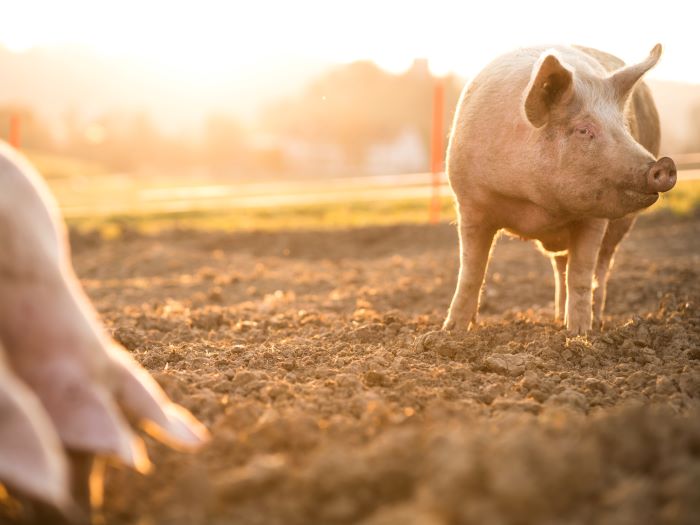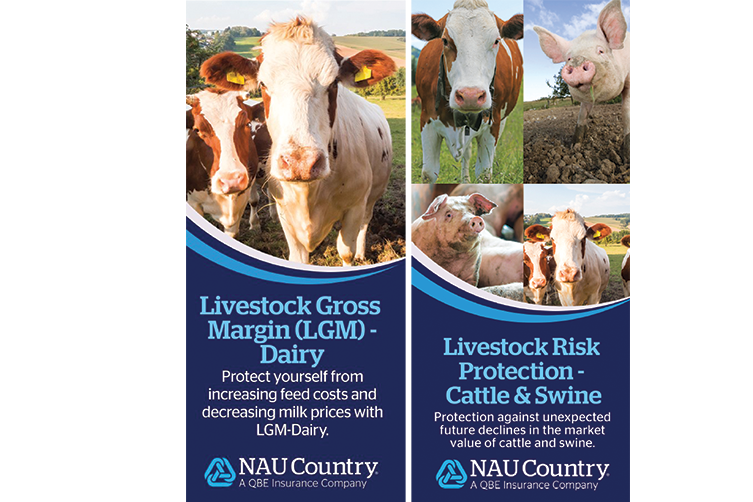Boost Your Experience with Bagley Risk Management
Boost Your Experience with Bagley Risk Management
Blog Article
Recognizing Animals Threat Defense (LRP) Insurance Policy: A Comprehensive Overview
Navigating the world of livestock threat defense (LRP) insurance coverage can be a complex venture for many in the farming sector. This sort of insurance supplies a safeguard against market changes and unanticipated situations that can affect animals producers. By comprehending the ins and outs of LRP insurance policy, producers can make educated choices that may secure their procedures from financial dangers. From just how LRP insurance works to the numerous coverage options readily available, there is much to uncover in this detailed guide that can possibly shape the method livestock manufacturers approach danger management in their organizations.

How LRP Insurance Functions
Periodically, comprehending the mechanics of Animals Threat Protection (LRP) insurance can be intricate, however breaking down exactly how it works can provide quality for breeders and farmers. LRP insurance is a threat monitoring device created to safeguard livestock producers versus unexpected price declines. The plan permits producers to establish a protection degree based on their details requirements, choosing the number of head, weight array, and protection rate. Once the plan is in location, if market value drop listed below the protection rate, producers can sue for the difference. It is very important to note that LRP insurance is not a profits guarantee; instead, it concentrates solely on cost risk protection. The coverage duration commonly ranges from 13 to 52 weeks, giving flexibility for producers to pick a period that aligns with their production cycle. By using LRP insurance, herdsmans and farmers can mitigate the monetary risks connected with rising and fall market rates, making sure better security in their procedures.
Qualification and Protection Options

When it comes to coverage options, LRP insurance policy supplies manufacturers the adaptability to pick the insurance coverage degree, insurance coverage duration, and endorsements that best suit their risk management requirements. By comprehending the eligibility standards and protection choices readily available, livestock manufacturers can make enlightened decisions to handle risk efficiently.
Advantages And Disadvantages of LRP Insurance Coverage
When assessing Animals Threat Protection (LRP) insurance, it is crucial for livestock producers to weigh the drawbacks and advantages inherent in this threat administration tool.

Among the primary advantages of LRP insurance policy is its ability to give protection versus a decrease in livestock prices. This can help secure manufacturers from financial losses arising from market fluctuations. Furthermore, LRP insurance policy offers a level of versatility, permitting producers to customize insurance coverage levels and policy durations to match their specific requirements. By securing in an ensured price for their livestock, producers can much better take care of risk and prepare for the future.
One limitation of LRP insurance policy is that it does not shield versus all types of risks, such as illness outbreaks or natural calamities. It is crucial for manufacturers to meticulously evaluate their individual danger exposure and economic situation to determine if LRP insurance policy is the best threat administration device for their operation.
Recognizing LRP Insurance Coverage Premiums

Tips for Making The Most Of LRP Perks
Maximizing the benefits of Livestock Risk Protection (LRP) insurance policy requires strategic preparation and aggressive threat monitoring - Bagley Risk Management. To make the many of your LRP coverage, consider the following suggestions:
Regularly Analyze Market Problems: Remain informed about market trends why not find out more and cost variations in the animals sector. By checking these factors, you can make enlightened choices regarding when to acquire LRP insurance coverage to secure against potential losses.
Set Realistic Coverage Degrees: When selecting protection degrees, consider your production expenses, market value of livestock, and potential risks - Bagley Risk Management. Establishing reasonable protection degrees ensures that you are properly safeguarded without paying too much for unnecessary insurance policy
Diversify Your Protection: Rather than depending entirely on LRP insurance, think about expanding your threat management methods. Incorporating LRP with various other threat management devices such as futures contracts or alternatives can supply detailed protection versus market unpredictabilities.
Review and Change Protection Routinely: As market problems change, occasionally assess your LRP insurance coverage to guarantee it lines up with your existing danger direct exposure. Readjusting coverage levels and timing of acquisitions can help optimize your threat defense technique. By following these suggestions, you can optimize the benefits of LRP insurance coverage and secure your animals procedure against unanticipated threats.
Conclusion
Finally, animals risk security (LRP) insurance is a beneficial tool for farmers to handle the economic threats related to their animals operations. By understanding how LRP works, qualification and protection options, in addition to the benefits and drawbacks of this insurance coverage, farmers can make informed decisions to safeguard their livelihoods. By thoroughly thinking about LRP premiums and carrying out strategies to make best use of benefits, farmers can alleviate potential losses and ensure the sustainability of their procedures.
Livestock producers interested in getting Animals Risk Defense (LRP) insurance can explore an array of eligibility requirements and coverage options tailored to their particular livestock operations.When it comes to protection choices, LRP try this out insurance policy offers producers the flexibility to choose the protection degree, insurance coverage period, and endorsements that finest fit their risk administration requirements.To comprehend the ins and outs of Animals Danger Protection (LRP) insurance fully, understanding the factors influencing LRP insurance costs is essential. LRP insurance coverage premiums are identified by different aspects, including the protection level chosen, the expected price of animals at the end of the insurance coverage duration, the kind of animals being guaranteed, and the size of the coverage period.Review and Readjust Coverage On a regular basis: As market conditions alter, occasionally examine your LRP protection to ensure it straightens with your present risk direct exposure.
Report this page